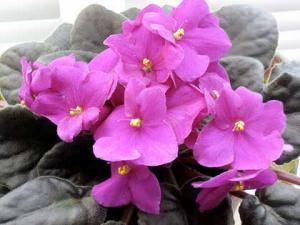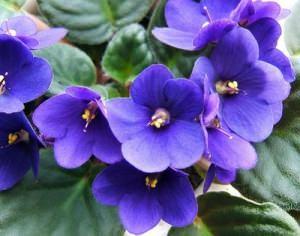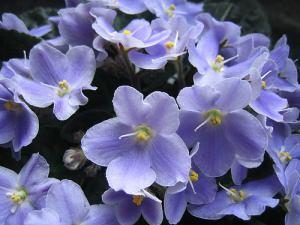African Violet in the house
Post from EditorialsThe African violet is an ideal species to be grown within the home environment, with small water need and a very long flowering period.
Indoor plants
 Seeing a flower when you get home, it's always very pleasant. However, it becomes increasingly difficult to find the flowers that are able to withstand the increasingly frenetic pace of our lives.
Seeing a flower when you get home, it's always very pleasant. However, it becomes increasingly difficult to find the flowers that are able to withstand the increasingly frenetic pace of our lives.
Low maintenance and durability, these are the characteristics of the African violet, or one of the few houseplants that can furnish every room of our house.
It offers an almost perennial flowering of a beautiful purple color that gives it its common name though, scientifically, it is called Saintpaulia, to remember the discoverer of its variant known (Ionantha) named Walter Von Saint Paul-Illaire.
The plants that we normally see at nursery gardens are cultivars, or derivations from Saintipaulia ionantha, a herbaceous perennial kind that belongs to the Gesneriaceae family, and that has its origins from Tanzania and Kenya.
Cultivation of African violets
 The flowering of African violet is often in shades of purple, although, thanks to processes of hybridization, one can find different variations on the market with shades ranging from pink to blue.
The flowering of African violet is often in shades of purple, although, thanks to processes of hybridization, one can find different variations on the market with shades ranging from pink to blue.
The flowering of this species is almost constant, it takes place throughout the course of the year, although the best and richer time is from March to October.
On the leaves, the African violet stands for the deep green that becomes pinkish underneath. The foliage is covered with a light down that invades the entire surface of the page, which has usually a rounded shape.
The African violet has heart-shaped leaves, dark green as mentioned before, while the root system is poorly developed, favouring transplantation in jars and small size bowls, ideal for interior spaces.
The African violet is a species that does not need special care if grown indoors in an apartment. The ideal temperature for the cultivation of this species must be around 18 and 25 degrees, with exposure to bright light. In this sense, it is the typical plant for the inner side of a window, careful to avoid exposure to direct sunlight, which instead lead to a rapid decay.
The water need of the African violet is very limited and you have to pay particular attention to its administration, since you have to soak the soil around the plant so that it is to absorb as you remember. On the water, also, the plant likes shallow limestone.
Watering from below, generally carried out thanks to a saucer, also has the advantage of not wetting the leaves that are in prolonged contact with water tend to rot easily.
 The African violet has to be fertilized during May, using liquid fertilizer, with a frequency of 15 days, possibly choosing soluble solutions containing large amounts of potassium and phosphorus.
The African violet has to be fertilized during May, using liquid fertilizer, with a frequency of 15 days, possibly choosing soluble solutions containing large amounts of potassium and phosphorus.
As regards the maintenance during the growth, the African violet is not to be pruned too much. Eliminate the dry leaves, or those parts which get sick with time passing and which could unfortunately lead to the occurrence of parasitic diseases.
With these few treatments you will enjoy a virtually perpetual flowering of your African violet, with a remarkable range of colors that can make a real show in the environment.
The African violet is, therefore, a viable alternative to the classic evergreen plants, with, in addition, the spectacle of a lush flowering, nice and steady, maybe to be placed in unusual vases, like tea cups.
80837 REGISTERED USERS










